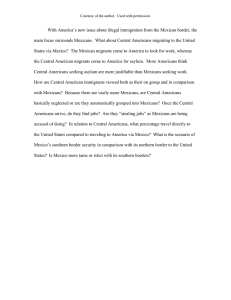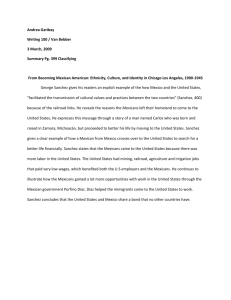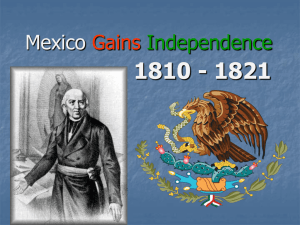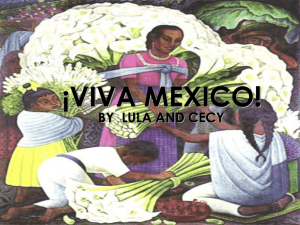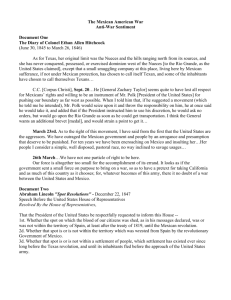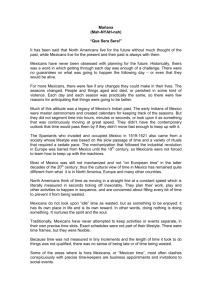The People
advertisement
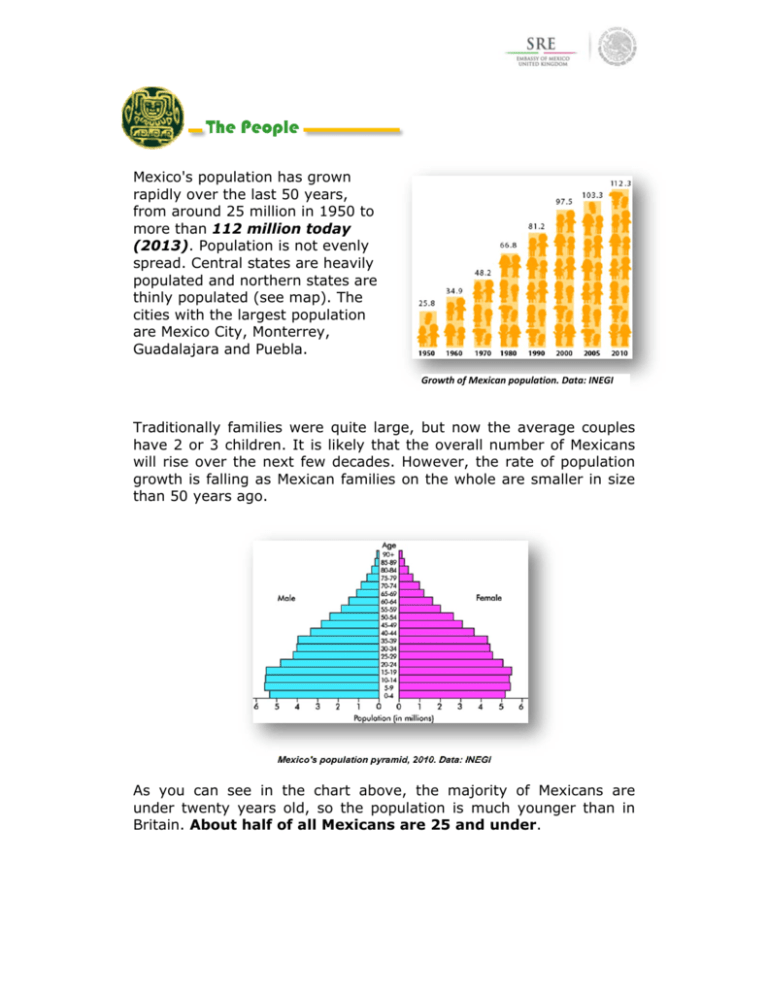
The People Mexico's population has grown rapidly over the last 50 years, from around 25 million in 1950 to more than 112 million today (2013). Population is not evenly spread. Central states are heavily populated and northern states are thinly populated (see map). The cities with the largest population are Mexico City, Monterrey, Guadalajara and Puebla. Growth of Mexican population. Data: INEGI Traditionally families were quite large, but now the average couples have 2 or 3 children. It is likely that the overall number of Mexicans will rise over the next few decades. However, the rate of population growth is falling as Mexican families on the whole are smaller in size than 50 years ago. Mexico's population pyramid, 2010. Data: INEGI As you can see in the chart above, the majority of Mexicans are under twenty years old, so the population is much younger than in Britain. About half of all Mexicans are 25 and under. History of the People In the 16th century the Spanish invaded and conquered what today is modern Mexico. This is when the population began to speak Spanish and was taught the Catholic religion. The Spanish colony was called Nueva España. The children born to Spaniards who married indigenous women were called mestizos and those born in the New World of Spanish parents were known as criollos (creoles). The Spanish brought some African slaves to work in sugar-cane plantations, especially in coastal areas. Some slaves married Spaniards and their children were called mulattos. After independence in 1811, slavery was abolished. Blacks mixed freely with the rest of the population and have now almost disappeared in the melting pot. Between 1550-1850, many people from Europe, especially from Spain, came to settle in what today is Mexico. Most were poor craftsmen wanting to start a new life in the newly discovered land. Many worked in the rich silver mines or in the textile industry. Way of Life The life of Mexican people has changed dramatically in the past hundred years. At the beginning of this century, most of the population lived in the countryside and worked the land. Today, many people have migrated to the cities. This is where the majority of Mexicans now live and work. Most work in commerce, services and manufacturing. Due to the migration to the cities, the number of people living in urban areas has increased; in contrast, the number of people living in rural areas has declined. In 1950, 43% of Mexico's population lived in urban areas and by 2010, this figure rose to nearly 78%. Only 22% of families still live in rural areas. Urban population growth In small villages the people often live in simple houses, sometimes made of adobe (mud bricks left to dry in the hot sun), wood or other natural resources. The children of these areas are not always able to complete school because they help their parents on the land or around the house. Great progress has been made to allow them to continue their studies while helping their families. Mexican families are very closeknit and enjoy themselves at every opportunity. Grandparents often live with the family and social activities revolve around holidays, birthdays, and saint's days. In their spare time, friends and relatives get together for a snack, an evening meal, or to go out and celebrate a special occasion. On Sundays, families often go to church in the morning, eat together and after lunch go for a walk, watch a game of soccer or baseball, or go to a park or museum. Mexican Race and Language Mexican people are a mix of Europeans, mostly Spanish, and Indians. Someone of Indian and Spanish descent is called a mestizo. Most Mexicans are mestizos. In Mexico, the national language is Spanish, but there are at least 52 other languages and dialects spoken by the indigenous peoples. In areas with a large indigenous population, some or all of the classes in certain state primary schools are taught in the native language of the region. According to the last census, almost seven million Mexicans speak languages such as Nahuatl, Mayan, Zapotec, Mixtec, Otomí and Tzeltal. The largest Indian groups are the Nahuas in central Mexico, the Maya in the south, and the Mixtecs and the Zapotecs in Oaxaca. Mexican Dress Most people who live and work in cities wear the same sort of clothes as people in Britain. However, there are several types of traditional dress which some Mexicans still wear, especially for festivals or celebrations. Each state has its own traditional dress, usually handmade, sometimes using traditional tools like hand weaving looms.
